Evolving Structure-Function Mappings in Cognitive Neuroscience Using Genetic Programming
Abstract
A challenging goal of psychology and neuroscience is to map cognitive functions onto neuroanatomical structures. This paper shows how computational methods based upon evolutionary algorithms can facilitate the search for satisfactory mappings by efficiently combining constraints from neuroanatomy and physiology (the structures) with constraints from behavioural experiments (the functions). This methodology involves creation of a database coding for known neuroanatomical and physiological constraints, for mental programs made of primitive cognitive functions, and for typical experiments with their behavioural results. The evolutionary algorithms evolve theories mapping structures to functions in order to optimize the fit with the actual data. These theories lead to new, empirically testable predictions. The role of the prefrontal cortex in humans is discussed as an example. This methodology can be applied to the study of structures or functions alone, and can also be used to study other complex systems.
References
Angeline, P. J. , Pollack, J. B. (1992). The evolutionary induction of subroutines. Proceedings of the fourteenth Annual Conference of the Cognitive Science Society. Hillsdale, NJ: ErlbaumBollobas, B. , Riordan, O. (1998). On some conjectures of Graffiti. Discrete Mathematics, 179, 223– 230Burgess, P. W. , Shallice, T. (1996). Response suppression, initiation and strategy use following frontal lobe lesions. Neuropsychologia, 34, 263– 273Chao, L. L. , Haxby, J. V. , Martin, A. (1999). Attribute-based neural substrates in temporal cortex for perceiving and knowing about objects. Nature Neuroscience, 2, 913– 919Churchland, P. S. , Sejnowski, T. J. (1992). The computational brain. Cambridge, MA: MITCohen, J. D. , Braver, T. S. , O’Reilly, R. C. (1998). A computational approach to prefrontal cortex, cognitive control, and schizophrenia: Recent developments and current challenges. In A. C. Roberts, T. W. Robbins, & L. Weiskrantz (Eds.), The prefrontal cortex. Executive and cognitive functions (pp. 195-220). Oxford: University PressCowan, N. (2001). The magical number 4 in short-term memory: A reconsideration of mental storage capacity. Behavioral and Brain Sciences, 24, 87– 114Dehaene, S. , Changeux, J.-P. (1995). Neuronal models of prefrontal cortical function. Ann. N. Acad. Sci., 769, 305– 319Elman, J. L. , Bates, E. A. , Johnson, M. H. , Karmiloff-Smith, A. , Parisi, D. , Plunkett, K. (1996). Rethinking innateness. A connectionist perspective on development. Cambridge, MA: MITGholson, B. , Shadish, W. , Neimeyer, R. A. , Houts, A. (1989). Psychology of science: Contributions to metascience. Cambridge, UK: University PressGobet, F. (2001). Is experts’ knowledge modular?. Proceedings of the 23rd Meeting of the Cognitive Science Society (pp. 336-431). Mahwah, NJ: ErlbaumGobet, F. , Clarkson, G. (2004). Chunks in expert memory: Evidence for the magical number four... or is it two?. Memory, 12, 732– 747Gobet, F. , Lane, P. C. R. (2005). A distributed framework for semi-automatically developing architectures of brain and mind. Proceedings of the First International Conference on e-Social Science. Manchester: ESRC National Centre for e-Social ScienceGobet, F. , Simon, H. A. (2000). Five seconds or sixty? Presentation time in expert memory. Cognitive Science, 24, 651– 682Goldberg, D. E. (1989). Genetic algorithms in search, optimization, and machine learning. Reading, MA: Addison-WesleyHadamard, J. (1945). The psychology of invention in the mathematical field. New York: DoverHanson, N. R. (1958). Patterns of discovery. Cambridge, UK: University PressHolland, J. H. (1992). Adaptation in natural and artificial systems. Cambridge, MA: MITKanehisa, M. (2000). Post-genome informatics. Oxford: University PressKentala, E. , Laurikkala, J. , Pyykko, I. , Juhola, M. (1999). Discovering diagnostic rules from a neurologic database with genetic algorithms. Annals of Otology, Rhinology and Laryngology, 108, 948– 954Koslow, S. H. , Huerta, M. F. (1997). Neuroinformatics. Mahwah, NJ: ErlbaumKosslyn, S. M. , Koenig, O. (1992). Wet mind. New York: The Free PressKoza, J. R. (1992). Genetic programming. On the programming of computers by means of natural selection. Cambridge, MA: MITKoza, J. R. (1994). Genetic programming II. Automatic discovery of reusable programs. Cambridge, MA: MITKuhn, T. S. (1977). The essential tension. Selected studies in scientific tradition and change. Chicago: The University of Chicago PressLangley, P. , Simon, H. A. , Bradshaw, G. L. , Zytkow, J. M. (1987). Scientific discovery. Cambridge, MA: MITMitchell, M. (1996). An introduction to genetic algorithms. Cambridge, MA: MITNewell, A. (1990). Unified theories of cognition. Cambridge, MA: Harvard University PressParker, A. , Gaffan, D. (1998). Interaction of frontal and perirhinal cortices in visual object recognition memory in monkeys. European Journal of Neuroscience, 10, 3044– 3057Pattichis, C. S. , Schizas, C. N. (1996). Genetics-based machine learning for the assessment of certain neuromuscular disorders. IEEE Transactions on Neural Networks. 7, 427– 439Popper, K. R. (1979). Objective knowledge. An evolutionary approach. Oxford: ClarendonPurpura, D. (1997). The human brain project: Priority or problem?. In S. H. Koslow & M. F. Huerta (Eds.), Neuroinformatics. Mahwah, NJ: ErlbaumRichman, H. B. , Gobet, F. , Staszewski, J. J. , Simon, H. A. (1996). Perceptual and memory processes in the acquisition of expert performance: The EPAM model. In K. A. Ericsson (Ed.), The road to excellence (pp. 167-187). Mahwah: ErlbaumRoberts, A. C. , Robbins, T. W. , Weiskrantz, L. (1998). The prefrontal cortex. Executive and cognitive functions. Oxford: University PressShallice, T. (1990). From neuropsychology to mental structure. Cambridge: University PressSimon, H. A. (1977). Models of discovery and other topics in the methods of science. Dordrecht: ReidelSimon, H. A. (1989). Models of thought. (Vol. II). New Haven: Yale University PressSimon, H. A. (1996). The sciences of the artificial. (3rd ed.). Cambridge: MITSimonton, D. K. (1999). Origins of genius. Oxford: University PressSonka, M. , Tadikonda, S. K. , Collins, S. M. (1996). Knowledge-based interpretation of MR brain images. IEEE Transactions on Medical Imaging, 15, 443– 452Toulmin, S. (1967). The evolutionary development in natural science. American Scientist, 5, 456– 471Uttal, W. R. (2001). The new phrenology: The limits of localizing cognitive processes in the brain. Cambridge, MA: MITValdés-Pérez, R. E. (1999). Principles of human-computer collaboration for knowledge discovery in science. Artificial Intelligence, 107, 335– 346Xu, Y. , Mural, R. , Einstein, J. , Shah, M. , Eberbacher, E. (1996). GRAIL. A multi-agent neural network system for gene identification. Proceedings of the IEEE, 84, 1544– 1552



